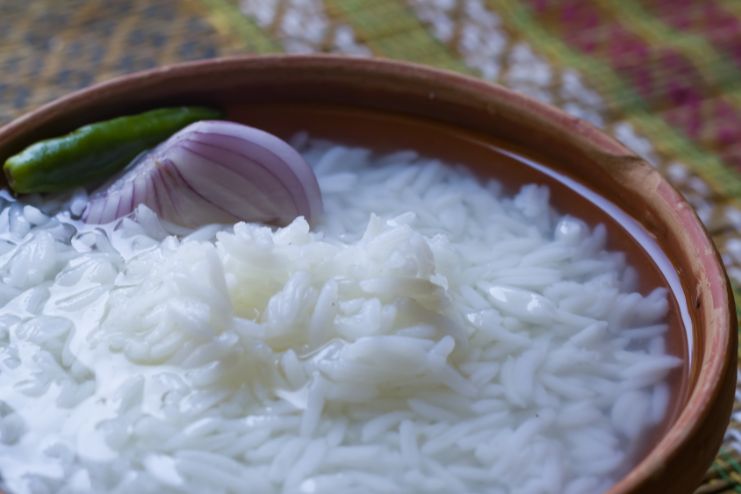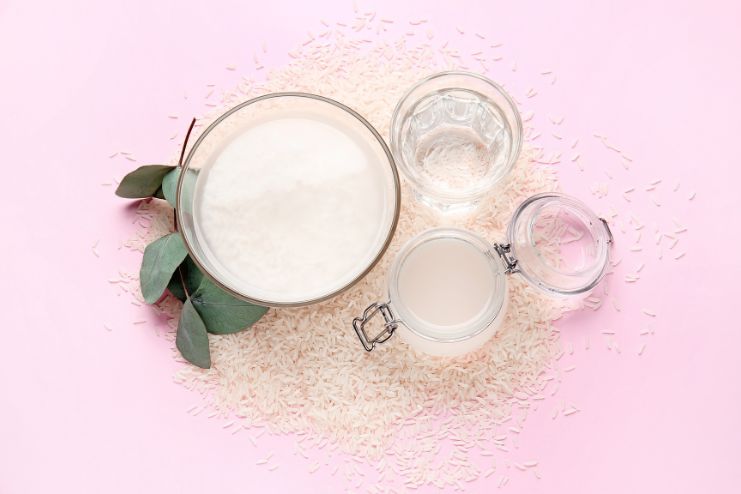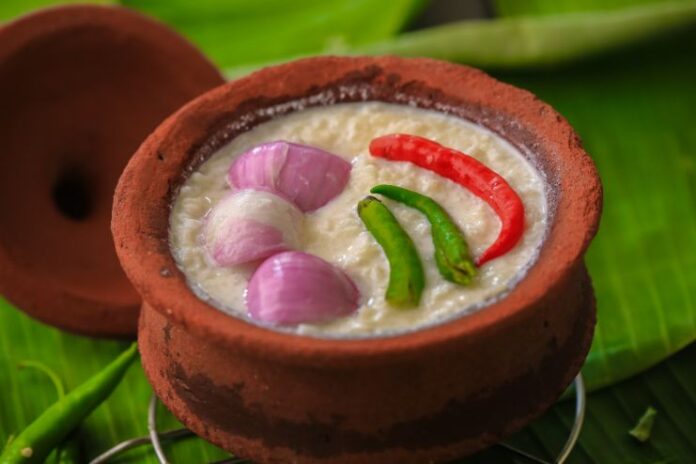Affiliate Disclaimer
Some links in this article are affiliate links. We may earn a small commission if you make a purchase through these links, at no extra cost to you. We only recommend products we find useful to our readersWe often look for healthy recipes that nourish our bodies. However, the recipes are frequently too bland, need a wide variety of specialty ingredients, or are difficult to prepare.
Did you know that a simple bowl of rice can do more than just satisfy your hunger? It can also provide your gut with the essential probiotics it needs. This dish not only helps boost your immunity but also helps maintain your energy levels throughout the day. We’re talking about fermented rice—a simple yet powerful superfood that has nourished cultures for centuries.
Fermented rice is loved across the globe for its rich probiotic content. From India’s cooling panta bhat to Japan’s umami-rich nukazuke, fermented rice has been a culinary secret of traditional diets. But with the world today obsessed with gut health trends and probiotic supplements, this ancient food is getting a well-deserved revival.
So, what makes fermented rice so special? In this article, we’ll break down its incredible health benefits, from aiding digestion to improving skin health, plus an easy way to make it at home. If you’re looking for a natural, budget-friendly way to boost your well-being, this is one forgotten superfood you’ll want to bring back to your plate!
Read More: 10 Natural Remedies to Boost Digestive Health from the Comfort of Your Home
What Is Fermented Rice?

Fermented rice is made by soaking cooked rice in water and letting it ferment naturally over time. This allows for the growth of desirable microorganisms, turning the rice into a probiotic-rich food. Various cultures have their own iterations:
- Indian Panta Bhat: Leftover rice is soaked overnight and eaten with salt, onions, and chilies. Often, curd is mixed in to add extra flavor and boost the probiotic content.
- Japanese Nukazuke: Rice bran-fermented vegetables, with rice bran as the fermenting medium.
- Korean Sikhye: A sweet rice drink prepared using fermented malt and cooked rice.
Fermentation not only preserves the rice but also enhances its nutritional value, making it more beneficial than regular cooked rice.
Nutritional Benefits of Fermented Rice
Here are some nutritional facts about fermented rice that you must know:
1. Probiotics:
Fermented rice contains lactic acid bacteria (LAB), which boost a healthy gut microbiome and aid digestion. Probiotics inhibit bloating, enhance nutrient value, and support gut barrier function. An optimal gut microbiome is associated with enhanced immunity, mental well-being, and reduced inflammation.
Compared to over-the-counter probiotic supplements, fermented rice represents a natural, cost-effective way to improve digestive health.
2. Vitamins:
Fermentation increases B vitamins, specifically B6, B12, and folate, which play a role in energy metabolism, brain function, and red blood cell formation. Vitamin B12, usually derived from animal products, becomes more bioavailable, thus fermented rice is a gift for vegetarians.
Folate (B9) plays an important role in cell repair, DNA synthesis, and pregnancy. These vitamins get destroyed when food is cooked, but fermentation retains and maximizes their efficiency.
3. Minerals:
Fermentation inactivates phytic acid, an antinutrient that prevents mineral absorption, making minerals such as calcium, iron, magnesium, potassium, and selenium more bioavailable.
Calcium strengthens bones, and iron improves oxygen delivery to reduce fatigue. Magnesium improves muscle and nerve function, and potassium aids in blood pressure. Selenium is an antioxidant that reduces inflammation and supports thyroid function.
4. Resistant Starch:
Fermented rice contains a lot of resistant starch, which feeds good bacteria in the gut, stabilizes blood sugar, and helps manage weight. Compared to plain rice, which is quickly digested to glucose, resistant starch is satiating and curbs hunger and calorie intake.
Read More: Resistant Starch Diet Plan – All You Need To Know
How Does It Compare to Regular Cooked Rice?

In comparison to regular white or brown rice, fermented rice is more digestible, has improved nutrient uptake, and has an added probiotic advantage. Regular rice tends to be a quick-digesting carb, whereas fermented rice retards glucose release, improves gut health, and supplies sustained energy.
Gut Health & Digestion Support
Probiotics in fermented rice help maintain a healthy gut microbiome. Proper gut flora balance supports digestion, avoids bloating, and might relieve Irritable Bowel Syndrome (IBS) symptoms and acid reflux. Regularly consuming fermented foods leads to better gut motility, superior nutrient absorption, and reduced inflammation.
Furthermore, fermented rice produces short-chain fatty acids (SCFAs) like butyrate, which tighten the lining of the intestines and support general gut health. The SCFAs minimize inflammation within the gut, increase peristalsis (the push of food through the intestines), and may even decrease the risk of digestive disease.
Read More: Gut Health Hacks: The Best Morning Foods to Kickstart Digestion
Boosts Immunity & Reduces Inflammation
A healthy gut contributes significantly to a strong immune system, and fermented rice promotes good bacteria that lead to better immunity. Fermented rice contains probiotics that strengthen gut health, making it easier for your body to eliminate infections and extract nutrients. It also has natural antioxidants that reduce inflammation and decrease the risk of heart disease and arthritis.
Improves Energy & Metabolic Health
Fermented rice is a natural energy booster, and it’s an excellent breakfast food. It’s easily absorbed and contains slow-releasing carbohydrates, which keep you full and energized for longer.
- Regulates Blood Sugar: The resistant starch in fermented rice delays glucose release, avoiding blood sugar spikes and crashes.
- Improves Insulin Sensitivity: Regular intake can help lower insulin resistance, making it ideal for people with diabetes or metabolic disorders.
- Helps in Weight Management: Resistant starch promotes satiety (fullness) and decreases cravings, assisting with portion control and weight loss.
Including fermented rice in your diet will help you support consistent energy levels and improve metabolic function throughout the day.
Read More: 10 Signs Your Gut Health Needs Attention (And How to Fix It)
Skin & Hair Benefits of Fermented Rice
Fermented rice isn’t just healthy for your stomach; it’s also good for glowing skin and healthy hair. Traditional cultures have used fermented rice water for years as a beauty treatment, and scientific studies now support its uses.
- Healthy, Glowing Skin: Fermented rice, with its high levels of B vitamins and antioxidants, prevents free radical damage and induces a natural shine.
- Strengthens Hair: Fermented rice water is rich in amino acids that feed hair follicles, enhancing hair strength, luster, and growth.
- Anti-Aging Benefits: Probiotics in fermented rice promote skin hydration, minimize inflammation, and prevent wrinkles.
Adding fermented rice into your diet (or using its water as a rinse) can be an easy, natural way to boost your beauty regimen.
How To Make And Eat Fermented Rice
Preparing fermented rice at home is simple and takes only two ingredients: rice and water.

How to Prepare Fermented Rice
- Cook Rice: Cook rice your regular way. Allow it to cool.
- Soak & Ferment: Soak the rice in water and set it at room temperature for 12-24 hours.
- Drain Off Excess Water: Drain and consume the rice plain or with yogurt, pickles, or herbs for extra flavor.
How to Eat It:
You can eat fermented rice in various ways. Try any of the below-mentioned ways to do this:
- Serve with yogurt, spices, or fermented vegetables for a probiotic meal.
- Blend it into smoothies or porridge for a quick breakfast.
- Use leftover fermented rice water as a hair or skin rinse for additional beauty benefits.
Storage Tip: Refrigerate for up to 3 days to preserve freshness and prevent spoilage.
Read More: Simple Meal Prep Tips for Sustainable Weight Loss
Are There Any Downsides or Risks?
Fermented rice is healthy for most individuals, but a few things should be noted:
- Over-Fermentation: If fermented rice sits around for too long, it will get too sour or harbor unwanted bacteria. Eat within 24 hours or refrigerate.
- Digestive Sensitivity: Some individuals with compromised digestion or acid reflux might want to try small amounts first to monitor how their body handles it.
- Food Safety: Always employ clean utensils and filtered water to avoid contamination.
If you have a weak immune system, consult a healthcare provider before incorporating fermented rice into your diet.
Read More: Why Probiotics Might Not Work Without Prebiotics: How to Maximize Gut Health
Final Thoughts

Fermented rice is a probiotic, nutrient-packed superfood that has recently gained popularity. It promotes gut health, immunity, digestion, metabolism, and even healthy skin and hair, all in a single easy, affordable meal. Unlike costly probiotic supplements, fermented rice is a natural, tried-and-true cure loaded with essential nutrients.
If you’re looking for an easy way to improve digestion, boost energy, and promote overall well-being, this is your sign to try fermented rice. Start by making a small batch at home, experiment with different toppings, and enjoy the incredible health benefits. Your gut (and body) will thank you! Give it a try today and feel the difference.
References
In this Article



















